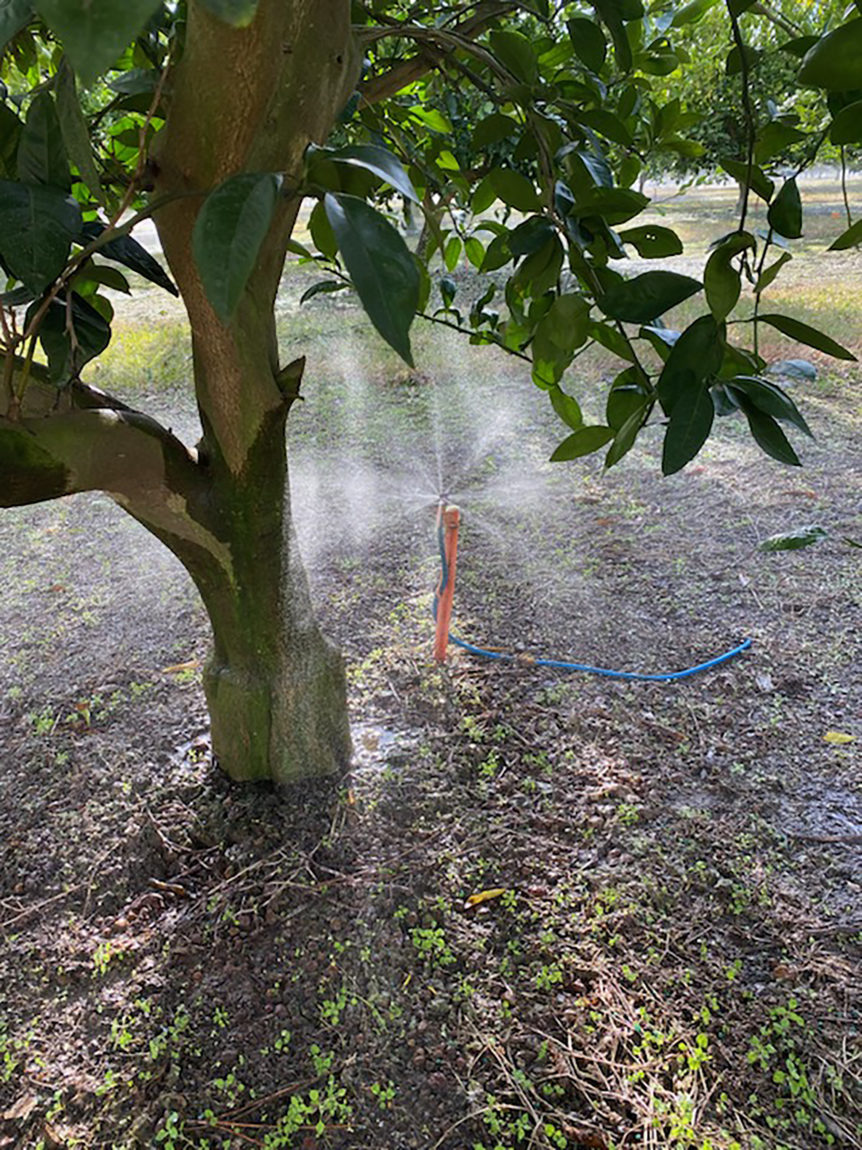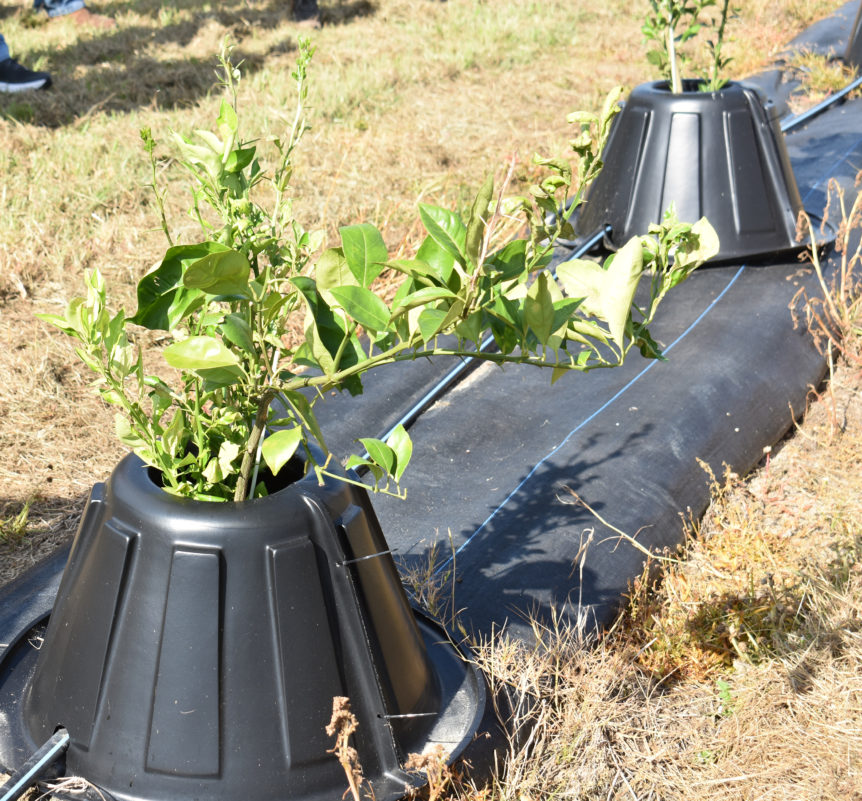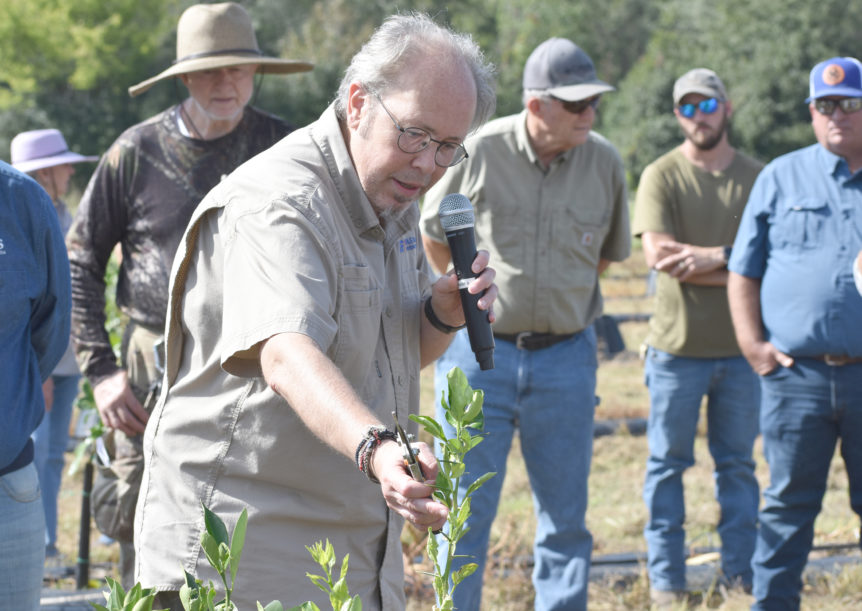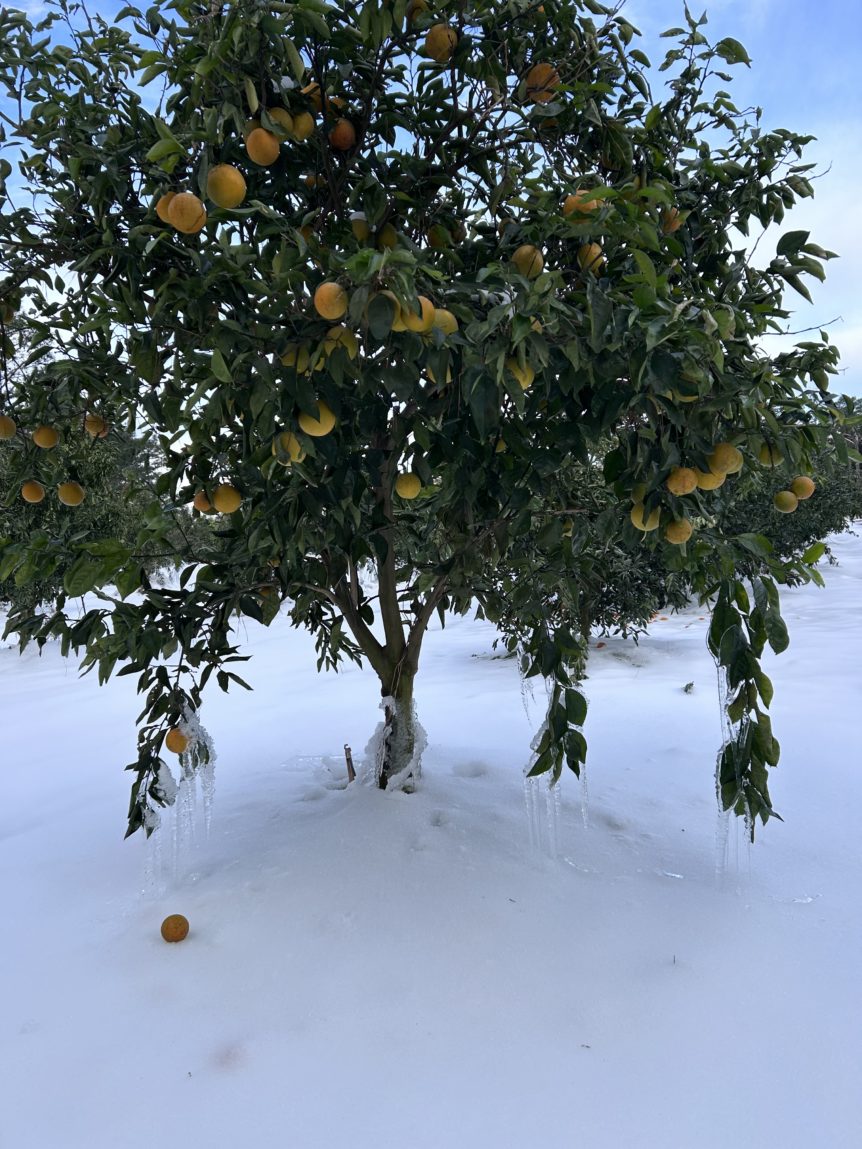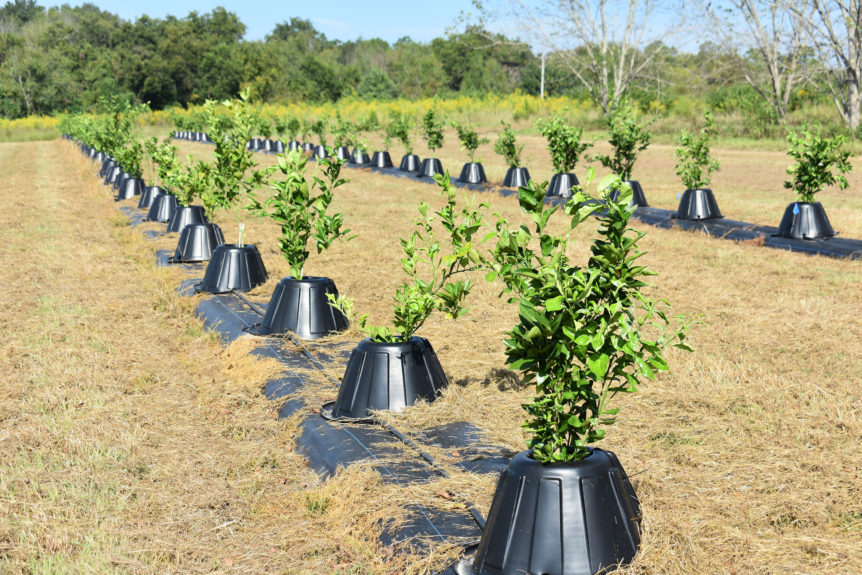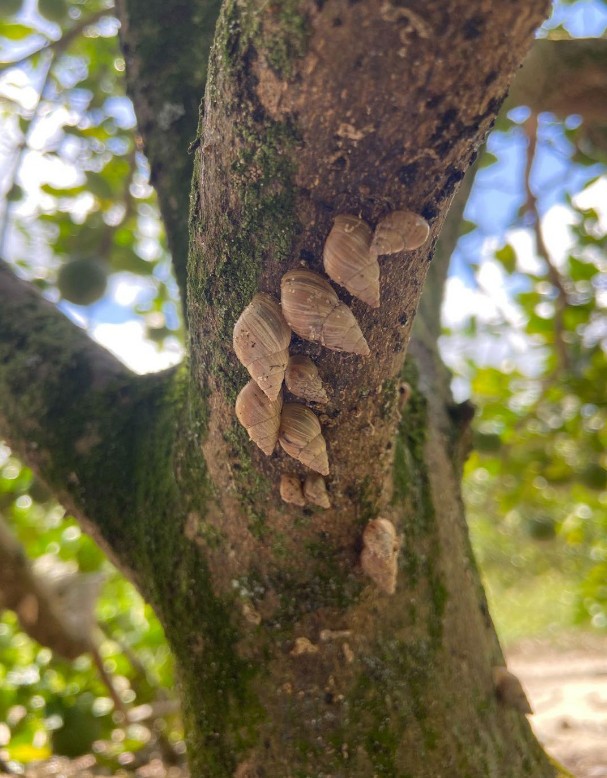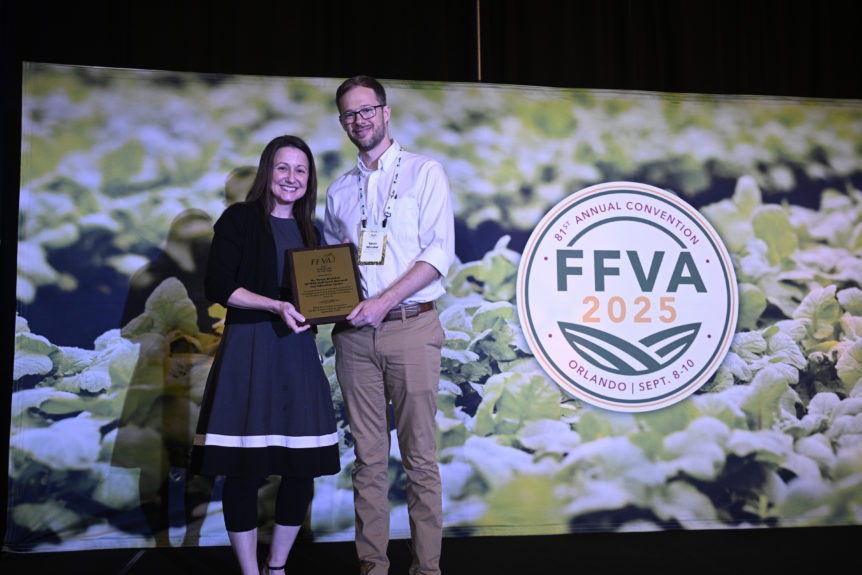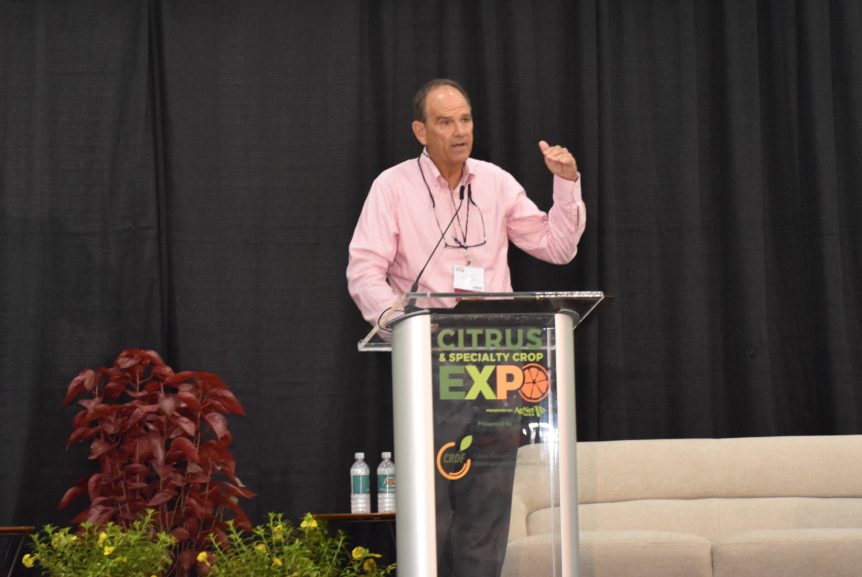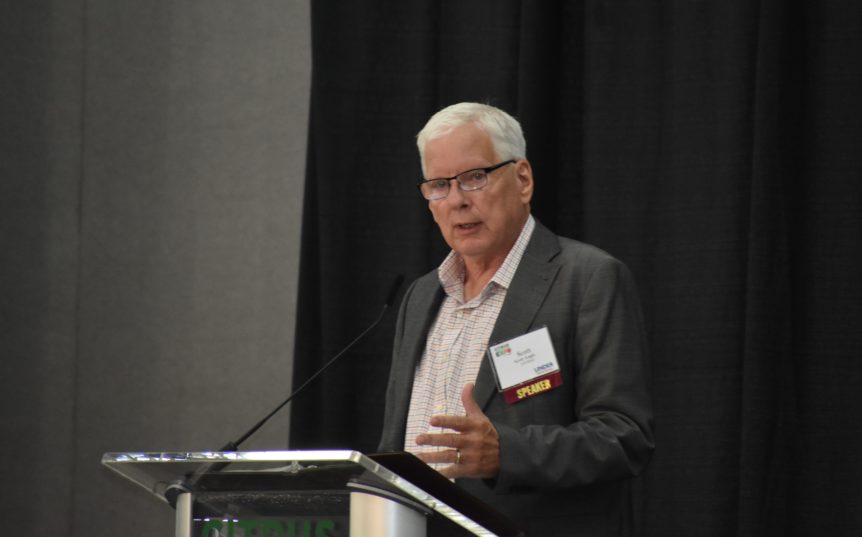A lack of adequate soil moisture could make an already challenging situation for Florida citrus growers worse. It is imperative that producers keep applying irrigation amid any prolonged dry period, says Chris Oswalt, University of Florida Institute of Food and Agricultural Sciences (UF/IFAS) citrus agent. Oswalt noted that many citrus-producing regions in Florida have had little, if any, rain in …
Bed System Benefits Citrus Production
A bed system used in citrus groves is still under research at the University of Florida Institute of Food and Agricultural Sciences (UF/IFAS) North Florida Research and Education Center (NFREC) in Quincy. But one researcher is already convinced that the system, which includes fabric mulch, is beneficial for growers. “This system is better for them. It’s already being used in …
Pruning Young Citrus Trees
Pruning is an important management tactic that cold-hardy citrus growers need to implement, especially during the early stages of tree development. Fernando Alferez, a University of Florida Institute of Food and Agricultural Sciences (UF/IFAS) citrus horticulturist, discussed pruning during the Cold-Hardy Citrus Field Day and Workshop in Quincy on Oct. 1. “Pruning is important because it will give the tree …
Freeze Tolerance Is Key to Diversification
Freeze tolerance is a focal point of citrus studies conducted at the University of Florida Institute of Food and Agricultural Sciences (UF/IFAS) North Florida Research and Education Center in Quincy. As citrus production continues to grow in the cold-hardy citrus region, growers need varieties that are able to withstand prolonged periods of sub-freezing temperatures. Leading that research is Muhammad Shahid, …
Blood Oranges Could Be Profitable Option for Cold-Hardy Citrus Producers
Blood oranges may be an enticing fruit to grow for cold-hardy citrus producers in North Florida, South Georgia and South Alabama. Muhammad Shahid, assistant professor of horticulture at the University of Florida Institute of Food and Agricultural Sciences (UF/IFAS), highlighted his blood orange research during the Cold-Hardy Citrus Field Day and Workshop at the North Florida Research and Education Center …
The Relationship Between Snails and Weeds Needs Research
The preference of Bulimulus bonariensis snails to feed on weeds in citrus groves does not necessarily imply that increased weed management will lead to a reduction in pest populations. This relationship requires further research by Lauren Diepenbrock, University of Florida Institute of Food and Agricultural Sciences (UF/IFAS) assistant professor and entomologist. “It’s something I think we really need to look …
Vance Whitaker Honored as FFVA’s Researcher of the Year
The Florida Fruit & Vegetable Association (FFVA) presented Dr. Vance Whitaker with its 2025 Researcher of the Year Award. The award was presented in September during FFVA’s annual convention in Orlando. The Researcher of the Year Award is given to deserving individuals who have dedicated themselves and their work to improving Florida agriculture. Whitaker, a professor of horticulture and …
Citrus Industry Leader Has High Hopes for OTC
Rick Dantzler, Citrus Research and Development Foundation chief operating officer, provided hope for citrus growers during the recent Citrus & Specialty Crop Expo. He believes citrus greening disease could soon be a thing of the past. But to get growers to that “tree of the future,” they need short-term solutions to overcome the devastating disease. Dantzler continues to tout trunk …
New, Faster Solutions Needed for Citrus Survival
University of Florida Institute of Food and Agricultural Sciences (UF/IFAS) researchers have made significant progress in finding ways to manage citrus greening disease. But solutions needs to be expedited for the sake of the citrus industry’s future in Florida. Scott Angle, UF/IFAS senior vice president for agriculture and natural resources, emphasized that point during last week’s Citrus & Specialty Crop …
Summer Update Informs Growers on Impactful Issues
The annual Citrus Grower’s Summer Update meeting on Aug. 14 in Valdosta, Georgia, provided cold-hardy growers with updates on several factors impacting the industry. Information on topics ranging from snails to phytophthora to Asian citrus psyllid trapping were presented to growers who are on the cusp of harvesting another season’s crop. Jake Price, University of Georgia (UGA) area citrus agent …










